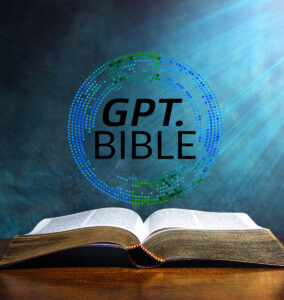Introduction
Matthew’s poor attitude toward women
Scholars generally can’t explain Matthew’s omission from Mark of the Widow’s Mite included in Luke 21:1-4 and Mark 12:41-44. This pericope gives us a critical clue for a Matthean pattern on women.
Luke’s interest in women, especially in widows, has been widely recognized. Most don’t realize Matthew’s restriction of women has a great influence on his editing of Marcan and Lukan material.

Take for example, the Matthean Infancy narrative, in which the angel appears three times to Joseph but never to Mary. According to Matthew, Mary has no words and nothing to ponder in her heart but is only the means of Jesus’ birth. According to Matthew she never rises above the humble obscurity of Jewish womanhood.
Matthew’s narrative of the Empty Tomb has parallels in Luke 24:1-11, Mark 16:1-8 and Matt 28:1-10. Matthew takes away the plaintive question of Mark’s women: ‘Who will roll away the stone?’
In comparing the parallels of Luke 16:18, Mark 10:11-12 and Matt 5:31-32, Matthew’s sayings on divorce deny women the right to divorce their husbands. This is a right that Mark takes for granted. Matthew allows men to divorce their wives for unchastity and then remarry. However, Mark gives no ground for anyone to remarry after a divorce. Matthew has radically altered a reported saying of Jesus to conform with the practice of his particular Jewish sect of Christianity.
Matthew changes pericopes which are adapted from Mark. While in Matthew the women keep their place to watch and serve, it tends to minimize personal detail about them. Compare Luke 4:38-39 and Mark 1:29-31 against Matt 8:14-15; Mark 14:3-9 against Matt 26:6-13; Mark 15:40-41 against Matt 27:55-56.
Matthew does retain the Marcan miracle stories of the woman with the haemorrhage and Jairus’ Daughter, but in doing so he leaves only the barest evidential details. Compare Luke 8:40-56 and Mark 5:21-43 against Matt 9:18-26.
Also, note that Matthew has edited the Marcan pericope of the Syrophoenician Woman to indicate Jesus’ reluctance to help. Compare Mark 7:24-30 with Matt 15:21-28. Jesus does not answer the woman’s plea, and he says he was sent only to Israel’s lost sheep when the disciples want him to send her away. Only her abject humility as indicated by her willingness to come like a dog eating crumbs under the table induce Jesus to help her. Matthew makes both the Syrophoenician. These limited examples within Matthew allow women to be examples of faith but not of righteousness. Matthean exhibits a distinction between faith and righteousness under the Law.
For example, take the pericope of the Widow’s Mite of both Luke 11:1-4 and Mark 12:41-44 which is clearly omitted in Matthew. This was apparently objectionable to Matthew in that the widow has neither served Jesus nor humbled herself before him, but he praises her highly for her deed. Although rabbis rarely would not poor widows or scorned their offerings, many did not consider them capable of righteousness.
Matthew omits several pericopes exhibited in Primitive Lukan material which is motivated by this poor attitude toward women. Such primitive material is even found in Marcions’ Gospel. A first example is Luke 10:38-42, where we see Martha wants Jesus to send Mary back to her work, but he defends her decision to sit and listen. Matthew rejected this pericope and none of his women approach the kind of freedom which Jesus grants Mary here.
The parable of the unjust judge of Luke 18:1-8 also falls outside the patterns in Matthew’s use of women. None of Matthews’ women are capable of this widow’s relentless and assertive demand for justice. It is hard to imagine the Matthean disposition being one of encouraging his people to approach God, as the widow comes to the judge in Luke 18:1-8. Moreover, there is no Matthean passage in which God’s action is compared in any way to the behavior of an immoral person like the reluctant and begrudging judge portrayed in Luke.
A further example of Matthew omitting primitive Lukan material favorable to women is the parable of the Lost Coin of Luke 15:8-10. The central figure is a poor woman who, in a dark lowly house, searches for a lost coin in the dust. The parable is presumably an analogy to illustrate God’s search for lost men. It is consistent with Matthew’s motives, that it includes no passages in which God’s action is compared to such a humble woman’s work.
Two miracle stories in Luke involving women also fall outside the pattern recognizable in Matthew that contains no stories of someone being healed unless he, his relatives, or his friends come humbly to Jesus. As indicated previously, this humble approach is especially noticeable where women are involved.
What also was objectionable to the author of Matthew is the more primitive Lukan stories of the Widow’s Son at Nain of Luke 7:11-17 and the Woman Healed on the Sabbath of Luke 13:10-17. Here are two cases where Jesus approaches the woman involved and performs the cure without any prior display of devotion or humility on her part.
Matthew’s editing indicates restrictive criteria for women regarding service and devotion. The author of Matthew likely held typical Jewish views on the place of women, finding some of these Lukan pericopes disturbing. The patterns we recognize in his editing reflect the underlying attitudes and prejudices of Matthew and his Church. The instances of the Widow’s Mite and the majority of the primitive Lukan pericopes on women did not fit the pattern of Matthew’s editorial selection. Accordingly, a review of Matthew in contrast to the other more primitive embodiments of the Gospel tradition, indicates the work product exhibits a low attitude toward women.
Luke and Mark favor women. Matthew diminishes them. Below is a list of instances that reflect poorly on Matthean attitude toward women:
- Matt 1:1-2:23 vs. Luke 1:1-2:52, depiction of Mary
- Matt 5:31-32; Matt 19:9 vs. Luke 16:18 and Mark 10:11-12
- Matt 8:14-15 vs. Luke 4:38-39 and Mark 1:29-31
- Matthew omits Luke 7:11-17
- Matthew 9:18-19, 23-26 vs. Luke 8:40-42,49-56 and Mark 5:21-24,35-43
- Matt 9:20-22 Vs Luke 8:43-48 and Mark 5:25-34
- Matthew omits Luke 10:38-42
- Matthew omits Luke 11:27-28
- Matthew omits Luke 13:10-17
- Matthew omits Luke 15:8-10
- Matt 15:21-28 vs. Mark 7:24-30
- Matthew omits Luke 18:1-8
- Matthew omits Luke 21:1-4 and Mark 12:41-44
- Matt 25:1-13
- Matt 26:6-13 vs. Mark 14:3-9 and Luke 7:36-50
- Matt 27:55-56 vs. Mark 15:40 and Luke 7:1-3
- Matt 28:1-10 vs. Luke 24:1-11 and Mark 16:1-8
Matthew’s poor attitude toward non-Jews
- Matt 8:5-13 vs. Luke 7:1-10 and Luke 8:28-30
- Matt 9:9-13 vs. Luke 5:27-32 and Mark 2:13-17
- Matthew omits Luke 9:49-50 and Mark 9:38-41
- Matthew omits Luke 9:51-56
- Matthew omits Luke 10:29-37
- Matthew omits Luke 11:5-8
- Matthew omits Luke 16:1-9
- Matthew omits Luke 17:11-19
- Matthew omits Luke 18:1-8
- Matthew omits Luke 18:9-14
- Matthew omits Luke 19:1-10
- Addition of Matt 18:17
- Addition of Matt 21:28-32
Matthew caters to the rich
- Matt 5:3,6 vs. Luke 6:20-21
- Matt 5:46-47 vs. Luke 6:32-36
- Matt 6:19-21 vs. Luke 7:33-34
- Matt 10:37-38 vs. Luke 14:26-27
- Matt 11:7-11 vs. Luke 7:24-28
- Matt 12:25-27 vs. Luke 11:17-23 and Mark 3:23-30
- Matthew omits Luke 12:13-15
- Matthew omits Luke 12:16-21
- Matthew omits Luke 14:7-14
- Matthew omits Luke 14:28-33
- Matthew omits Luke 16:14-15
- Matthew omits Luke 16:19-31
- Matthew omits Luke 18:9-14
- Matt 19:16-22 vs. Luke 18:18-23 and Mark 10:17-22
- Matt 19:23-40 vs. Luke 18:24-30 and Mark 10:23-31
- Matt 24:45-51 vs. Luke 12:42-6
- Matt 25:14-30 vs. Luke 19:11-27
- Matt 26:6-13 vs. Mark 14:3-9 and Luke 7:36-50

